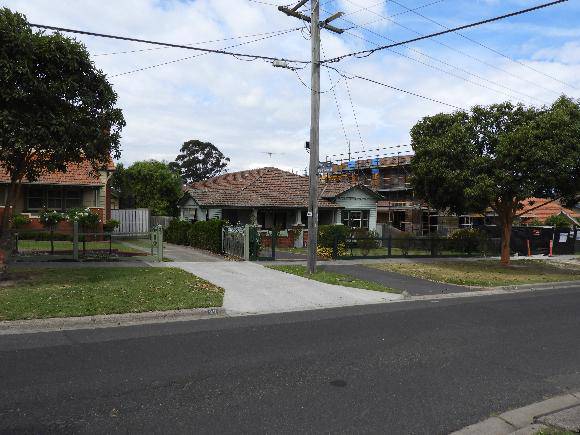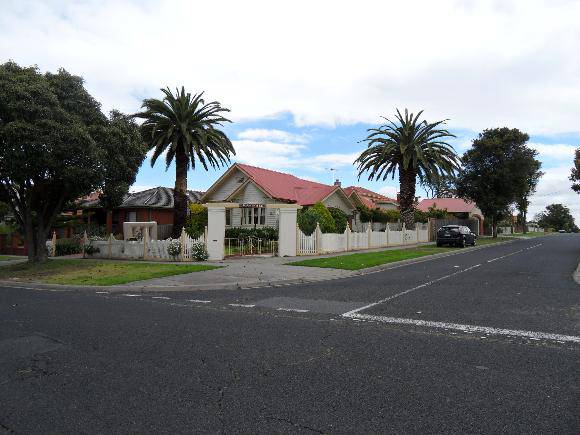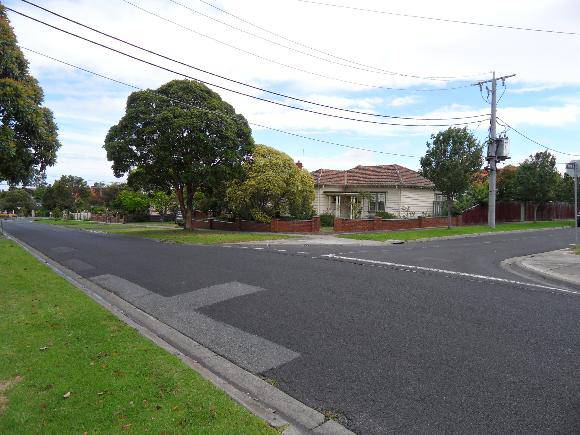| Back to search results » | Back to search page » |
|
MCCRACKEN STREET
Other NamePrecinct Location30-50 & 27-49 MCCRACKEN STREET, ESSENDON, MOONEE VALLEY CITY LevelIncluded in Heritage Overlay |
|
Statement of Significance
What is Significant?
The McCracken Street precinct, at 30-50 and 27-49 McCracken Street,
Essendon, a residential area comprising a group of interwar bungalows
built in c.1927-35 on the Mar Lodge Estate subdivision (1921), is
significant. The following features contribute to the significance of the precinct: . The pattern of development, which comprises a 1921 subdivision of a
Victorian mansion estate which was rapidly developed in the interwar years. . The relatively intact group of interwar bungalows, and the original
form, materials, setback, and detailing that are characteristic of
interwar timber bungalows. . The well-maintained garden setting. . Original or early front fences at 29 and 37 McCracken Street. . The mature Canary Island palm trees and lych gate at 27 McCracken Street. . The wide nature strips. . The visual cohesion enhanced by the street trees (Lophostemon confertus). The houses at 27, 29, 31, 33, 37, 39, 43, 45, 47, 49 and 30, 32, 34,
36, 38, 40, 42, 46, 48, 50 McCracken Street are Contributory. The
house at 27 McCracken, situated on a prominent corner, is
distinguished by two mature Canary Island Palms and a lych gate at the corner. Non-original alterations and additions to the Contributory houses are
not significant. The houses at 35, 41 and 44 McCracken Street are Non-contributory.
How is it significant?
30-50 and 27-49 McCracken Street, Essendon, is of local historic and
representative (architectural) significance to the City of Moonee Valley.
Why is it significant?
Historically, the McCracken Street Precinct, Essendon, is significant
as an illustration of what was a typical pattern in the suburbs of
Moonee Valley in the interwar period, when large Victorian-era mansion
estates were subdivided for suburban development as they became too
expensive to maintain, and then were almost completely developed
during the intensive period of suburban expansion that followed World
War I. This pattern of development demonstrates the accelerated
suburban growth of Essendon and of the municipality during the
interwar years, encouraged by improved transport connections and other
important services such as being sewered and having made roads.
(Criterion A) Architecturally, the McCracken Street precinct is significant as a
relatively intact group of interwar timber bungalows. The houses were
built over a relatively short time span, between c.1928 and 1935, and
share similar features typical of the interwar Bungalow style,
including form, materials, setback and well-maintained garden
settings, some with original or early front fences. The aesthetic
qualities and visual cohesion of the precinct are enhanced by the good
integrity of most of the houses, several of which (for example, 29, 36
and 37) retain original or early front fences. The aesthetic qualities
are further enhanced by the two Canary Island palm trees in the front
garden of 27 McCracken Street. These trees were popular garden plants
in the interwar period and are of a maturity that suggests they may
have been an early part of the garden. The aesthetic qualities and
cohesive character of the McCracken Street precinct is also enhanced
by the generous landscape treatment of the streetscape comprising wide
lawn nature strips and mature Brush Box trees (Lophostemon
confertus). (Criterion D)
Group
Residential buildings (private)
Category
House






